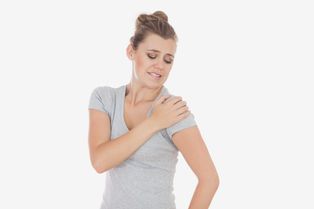0
item(s)
Cart is empty
|
Home
::
|
Dislocation

A dislocation is an injury that affects the joint. The joint is the place where two or more bones are connected to each other. A dislocation is a condition in which the ends of the bones are forced from their usual position. It is a painful injury that temporarily deforms and renders the joint immobile.
A dislocation occurs when the bone is separated from the joint. For example, the top of the arm bone fits into a joint at your shoulder. When the bone slips or leaves its joint, the outcome is a dislocated shoulder. Nearly all the joints in the body can be dislocated including the knee, hip, ankle, or shoulder.
A dislocation commonly occurs in the shoulders and fingers. Other parts of the body that can be dislocated include elbows, knees, and hips. In the event that you suspect a dislocation, consult your doctor immediately to get your bones back in place.
What are the Causes of a Dislocation?
Dislocations usually occur when a joint experience an unexpected or unbalanced effect. This can occur during a fall or if there is a harsh blow to the affected area.
Dislocations are common in sports that involve contacts such as soccer and hockey, and also in sports that may include falls, such as gymnastics and volleyball. Other categories of individuals that can dislocate the joints of their fingers and hands are basketball players and football players, this occurs as a result of accidentally striking of the ball, the ground or another player.
Another common cause of dislocation is a hard blow to the joint in a motor accident.
Risk Factors
Below are some risk factors for a joint dislocation:
1. Susceptibility to falls. It is possible to experience a dislocated joint during a fall if the arms are used to brace for impact or in the event that you land forcefully on a body part, such as the hip or shoulder.
2. Heredity. Some people are born with ligaments that are more flexible and more predisposed to injuries than most people.
3. Participating in sports. Many dislocations occur when you participate in high-impact or contacts sports such as gymnastics, wrestling, basketball, and soccer.
4. Motor vehicle accidents. Accidents from a motor vehicle are the most common causes of hip dislocation, but putting on a seat belt can help to reduce the risk of injury.
Dislocation of a joint can happen to anyone if they fall or feel some other type of trauma. However, elderly individuals are at greater risk, especially if they are not mobile or are less capable of preventing falls.
Children may also be more susceptible to dislocations if they are not supervised or play in areas that are not protected. Those who engage in a behavior that is considered to be unsafe during physical activities have a higher risk of accidents, dislocation a typical example.
What are the Symptoms of a Dislocation?
It is easy to recognize the symptoms of a dislocation. The hallmark symptom of a dislocation is that the affected area becomes swollen and looks bruised and discolored. It will also reduce the range of movement of the joint. It is possible to see deformation around the joint area. Some of the other symptoms that occur after a dislocation are:
• Reduced range of motion.
• A painful motion of the affected joint.
• Numbness around the injured site.
• A feeling of tingling around the injured spot.
Dislocation Treatment
Treatment for a Dislocation requires restoring the circulation and blood flow to the affected structures in your injured area. Pain is caused when swelling, inflammation and decreased circulation generate a blockage, which causes blood flow to be interrupted or slowed. Treatment for this issue requires breaking up the accumulated fluids in your injured area to allow for improved healing and quicker recovery.
Products recommended for symptoms of swelling, redness, pain, and inflammation, and if coolness makes your pain feel better:
Ice Substitute Poultice
Bruise Relief Liniment
Muscle Therapy Massage Oil
Products recommended when swelling and inflammation are gone, but you still feel pain, stiffness, weakness, and/or sensitivity in cold and damp weather, and if heat makes your pain feel better:
Pain Relief Liniment
Tendon and Ligament Poultice
Muscle Therapy Massage Oil
